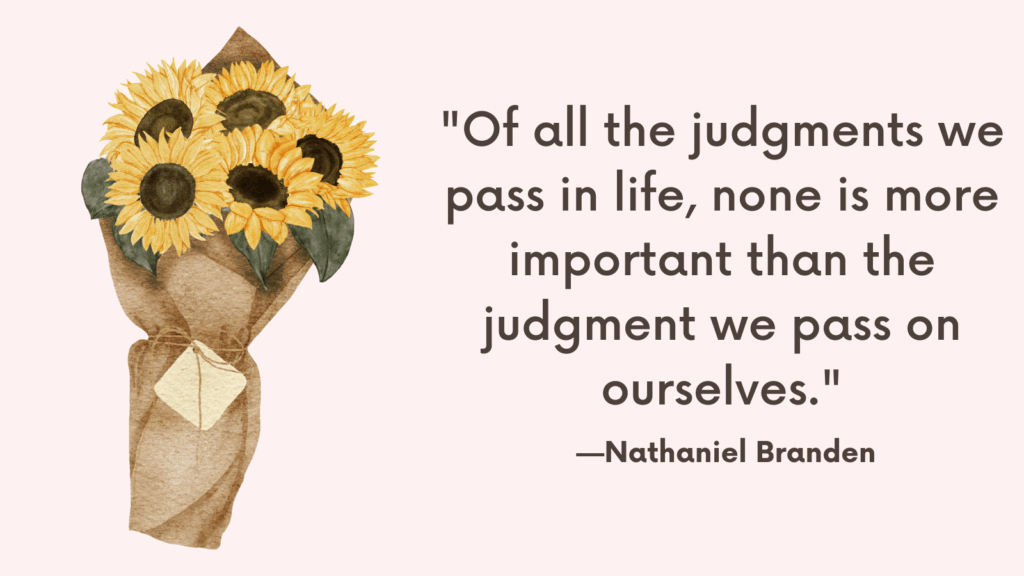This post explains what happens when a codependent leaves a narcissist.
6 Things Happen When a Codependent Leaves a Narcissist
When a codependent individual decides to leave a relationship with a narcissist, several important emotional and psychological dynamics come into play.
By understanding these dynamics and implementing effective strategies, the codependent can navigate this challenging transition more successfully.
Let’s explore some of the common things that happen when a codependent leaves a narcissist and how to address them.
1. Emotional roller coaster
Leaving a narcissistic relationship often triggers a range of intense emotions.
The codependent may experience relief and liberation from escaping the toxic dynamic, but also sadness, guilt, anger, and fear.
It is crucial to acknowledge and validate these emotions as a natural part of the healing process.
Emotional regulation techniques, such as deep breathing exercises, mindfulness meditation, and journaling, can help manage and process these intense emotions.
2. Grieving the loss
Leaving a narcissist can also involve grieving the loss of the relationship and the dream of what it could have been.
Codependents often invest significant time and energy into trying to fix and rescue the narcissist.
Accepting that the relationship was unhealthy and letting go of those hopes can be painful.
Allow yourself to grieve and mourn the loss. Engage in self-compassion and remind yourself that ending the relationship was an act of self-care and self-preservation.
It may be helpful to write a goodbye letter to the narcissist, expressing your unspoken thoughts and emotions as a way of closure.
Related: How To Overcome High Functioning Codependency?
3. Reclaiming personal identity
Codependents tend to lose themselves in their relationships with narcissists, often neglecting their own needs and desires.
When leaving the narcissist, rediscovering and reclaiming their own identity becomes a priority.
Engage in self-exploration activities to reconnect with your own values, interests, and goals. This may include therapy, journaling, self-reflection exercises, or pursuing new hobbies and experiences.
Emphasize self-care and prioritize your own needs and desires. Practice setting boundaries to protect your sense of self and prevent falling back into codependent patterns.
4. Addressing codependency patterns
Codependency is a learned behavior that develops as a coping mechanism in dysfunctional relationships.
Leaving a narcissist is an opportunity to break free from these patterns and develop healthier ways of relating to others.
Engage in therapy or counseling specifically focused on codependency. Cognitive-behavioral therapy (CBT), dialectical behavior therapy (DBT), and schema therapy are evidence-based approaches that can help identify and change codependent thinking and behaviors.
Develop healthy coping mechanisms, assertiveness skills, and communication strategies to establish and maintain healthy boundaries in future relationships.
Related: Top 10 Signs You’re Healing from Codependency
5. Establishing support networks
Narcissists often isolate their partners and undermine their self-esteem by attacking their support systems.
After leaving a narcissist, building a strong support network is vital for recovery and preventing relapse.
Reach out to friends, family, or support groups who can provide understanding, empathy, and validation.
Surround yourself with positive and trustworthy individuals who support your healing journey.
Consider joining a support group specifically for individuals who have experienced narcissistic abuse.
6. Healing from trauma
Being in a relationship with a narcissist often involves emotional, psychological, and sometimes even physical abuse.
Leaving the narcissist is only the first step in healing from the trauma experienced during the relationship.
Seek trauma-informed therapy to address and heal from the effects of the abuse. Evidence-based treatments like Eye Movement Desensitization and Reprocessing (EMDR) and Trauma-Focused Cognitive Behavioral Therapy (TF-CBT) have shown effectiveness in treating trauma-related symptoms.
Focus on self-care practices that promote relaxation, self-soothing, and stress reduction, such as exercise, mindfulness, and engaging in activities that bring joy and comfort.
Related: Best 10 Overcoming Codependency Exercises

How to Avoid Narcissistic Relationships?
1. Strengthen Self-Esteem and Self-Worth
Building a strong sense of self-esteem and self-worth is crucial in avoiding future narcissistic relationships.
Recognize and celebrate your own value, focusing on your strengths and positive qualities.
When you have a healthy level of self-esteem, you are less likely to seek validation from others who may exhibit narcissistic tendencies.
2. Redefine Relationship Expectations
Take time to evaluate and redefine your expectations for a healthy relationship.
Identify the characteristics and values you desire in a partner, such as empathy, respect, and reciprocity.
By establishing clear expectations, you can recognize when a potential partner does not meet them, helping you avoid entering into a relationship with a narcissistic individual.
3. Practice Effective Communication
Effective communication is essential in any healthy relationship.
Develop and prioritize open and honest communication skills that contribute to mutual understanding and respect.
Healthy communication fosters an environment where narcissistic behaviors are less likely to thrive, making it easier to identify and address potential red flags early on.
Related: 4 Essential Keys To Effective Communication
4. Trustworthy Intuition
Trust your intuition and pay attention to your instincts.
Often, our intuition can alert us to potential warning signs or gut feelings about someone’s intentions.
Cultivate self-awareness and learn to differentiate between intuition and fear-based reactions.
Trusting and listening to your intuition can help steer you away from potentially harmful relationships.
5. Establish Boundaries and Stick to Them
Establishing and maintaining clear boundaries is crucial in avoiding narcissistic relationships.
Define what is acceptable and unacceptable behavior for you within a relationship. Be firm in asserting your boundaries and communicate them effectively to potential partners.
Healthy boundaries act as a protective barrier against manipulative or controlling behavior.
6. Engage in Self-Care
Prioritizing self-care is vital in avoiding future narcissistic relationships.
Focus on activities that promote self-love, self-compassion, and relaxation.
Engage in hobbies, exercise, spend time with loved ones, or seek therapy to maintain mental and emotional well-being.
By caring for yourself, you cultivate a heightened sense of self-awareness and create a strong foundation for attracting healthy relationships.
7. Learn to Identify Red Flags
Educate yourself on the typical characteristics and red flags associated with narcissistic individuals.
These may include excessive self-centeredness, lack of empathy, controlling behavior, or a constant need for admiration.
Be vigilant in observing behavior patterns, and trust your judgment when encountering potential partners who exhibit concerning traits.
Related: Relationship Red Flags Quiz
Conclusion
Leaving a narcissistic relationship as a codependent individual can be incredibly challenging, but it is also a significant step towards reclaiming one’s own well-being.



